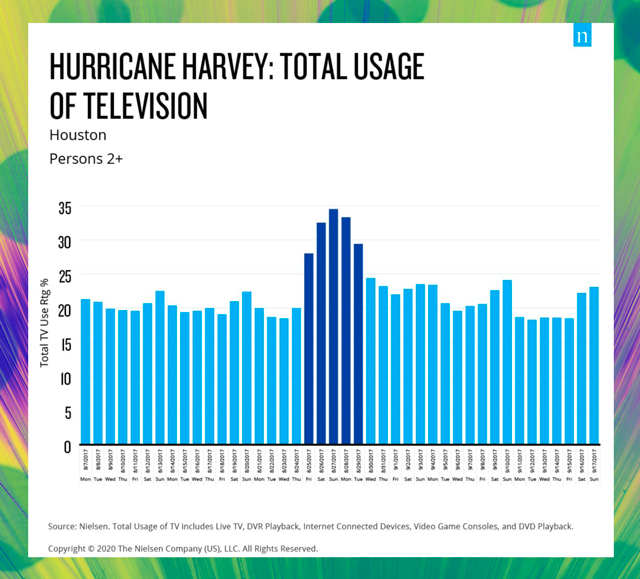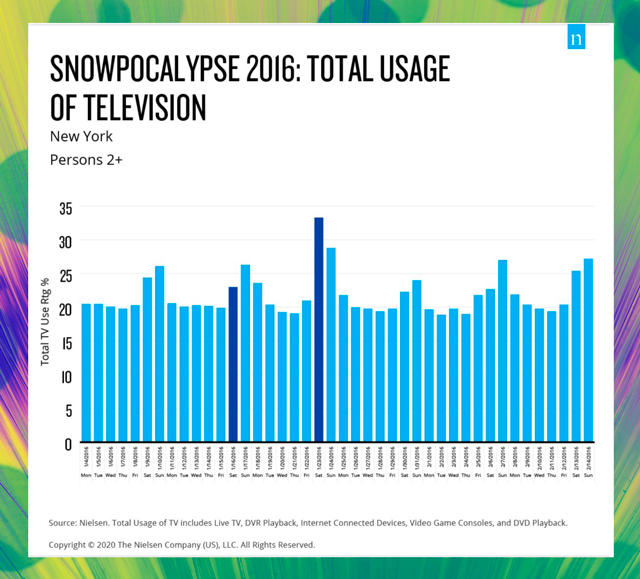Kelsey Sutton reports in Ad Week:
Americans stand to watch as much as 60% more television now that increasingly strict coronavirus-related lockdowns and shutdowns are in place. Television usage time in the Houston market went up 56% during Hurricane Harvey. The 2016 blizzard in New York saw a 45% jump in television usage time. Those viewers were mostly devoted to consuming feature films, news and general format programming. Working from home may also drive increased television viewership: more than three hours more per week than non-remote workers
Key insights:
- Television usage time went up 56% in the Texas market following Hurricane Harvey and jumped 45% in New York after a 2016 blizzard.
- Nielsen anticipates remote work will drive more TV media consumption.
Americans stand to watch as much as 60% more television now that increasingly strict coronavirus-related lockdowns and shutdowns are in place in cities around the country, according to an analysis from Nielsen.The measurement company analyzed total television usage data during two other recent weather-related shutdowns: Hurricane Harvey, which hit Texas and Louisiana in 2017, and a major blizzard that affected the New York area in January 2016.While both instances were more localized crises, television usage spiked in those markets during the period of impact. Television usage time in the Houston market went up 56% during Hurricane Harvey compared to the previous period, the analysis found. Similarly, the Saturday of the 2016 blizzard in New York saw a 45% jump in television usage time. Those viewers were mostly devoted to consuming feature films, news and general format programming.“Be it snowstorms, hurricanes or a global pandemic, media users ramp up their media consumption to stay informed, kill time, find solace and stay in touch with others,” Nielsen said in the report, which it released today.Working from home may also help drive increased television viewership: more than three hours more per week than non-remote workers, according to the analysis. Remote employees will on average spend 25 hours and two minutes every week consuming traditional TV, compared to the 21 hours and 56 minutes per week that the average non-remote worker will spend watching traditional TV. Remote employees also spend about a half-hour more time spent on their tablets than non-remote workers. Radio consumption, meanwhile, remains largely unchanged for remote to non-remote employees.Nielsen’s report confirms some early thinking about the effects of the spread of coronavirus on the advertising and media industries. While production is mostly halting, experts believe TV viewership will increase but note those ratings spikes might be less noticeable now as TV viewing has become so fragmented.“I think we’ll see an increase in time spent with video, but that will happen across live, delayed, VOD and streaming, so the impact will be tough to measure solely by Nielsen ratings,” David Campanelli, co-chief investment officer, Horizon Media, told Adweek earlier this month.Nielsen’s early analysis of video consumption in South Korea and Italy, both of which have been hit hard by coronavirus, found that TV usage levels have increased.






















0 comments:
Post a Comment